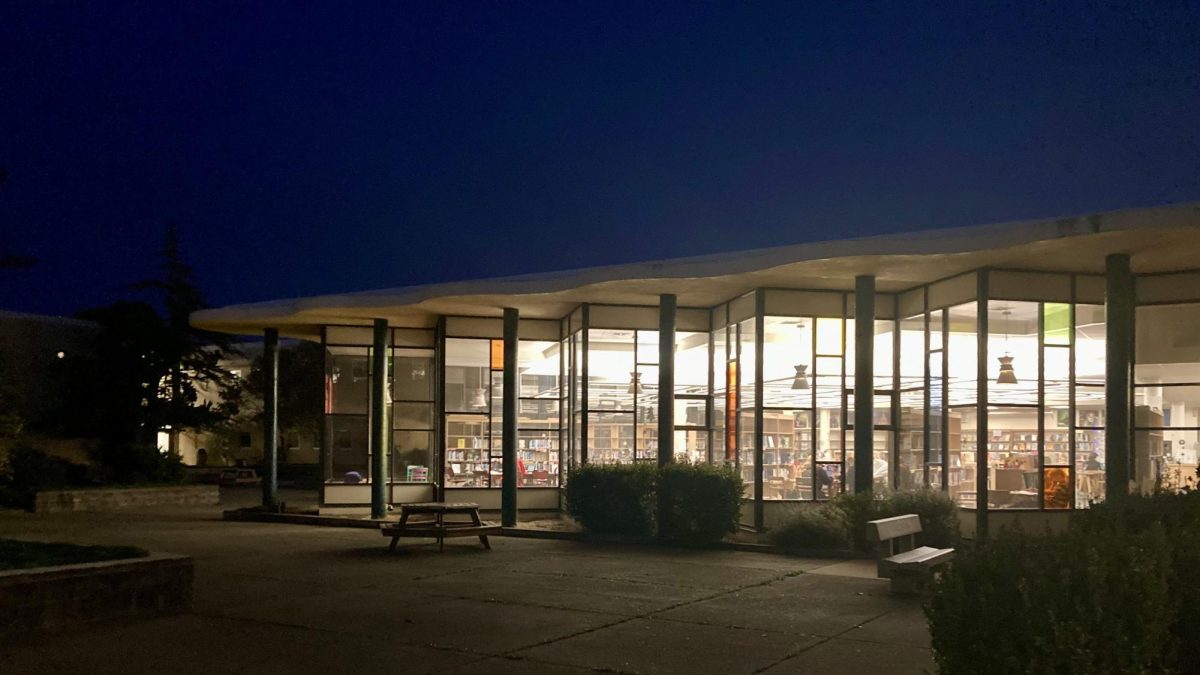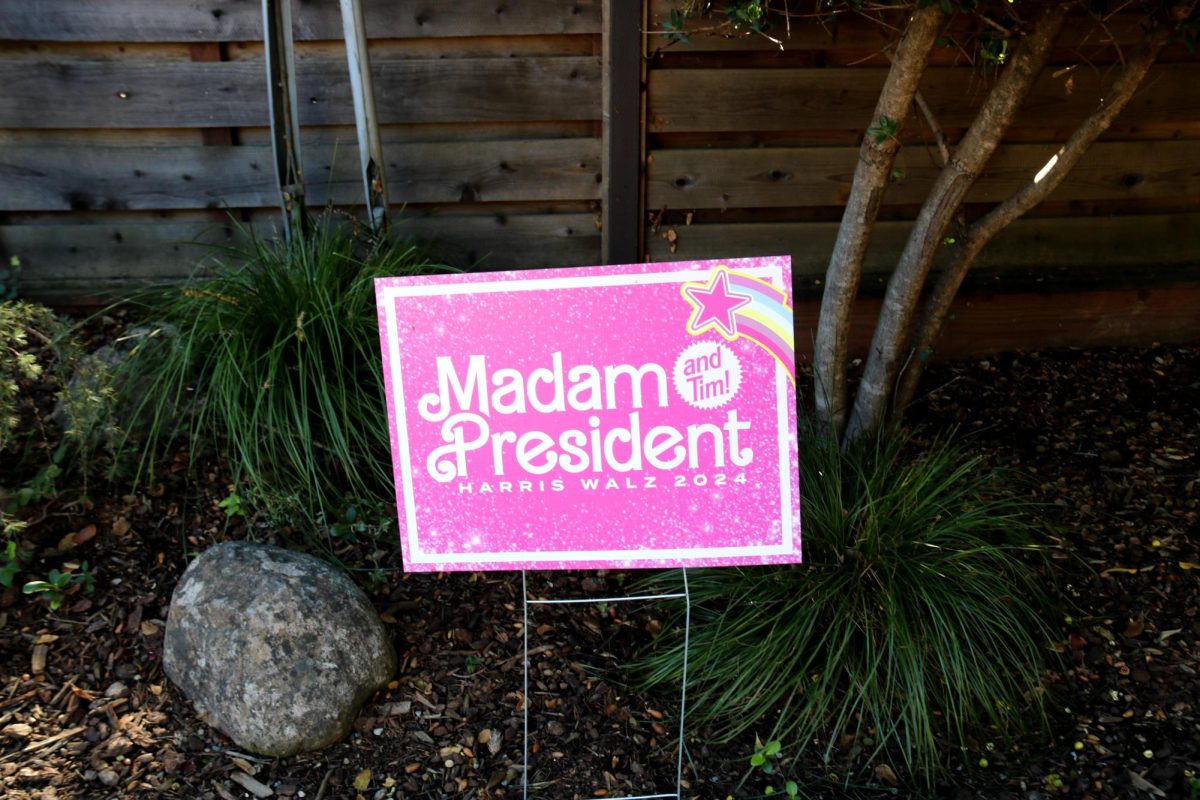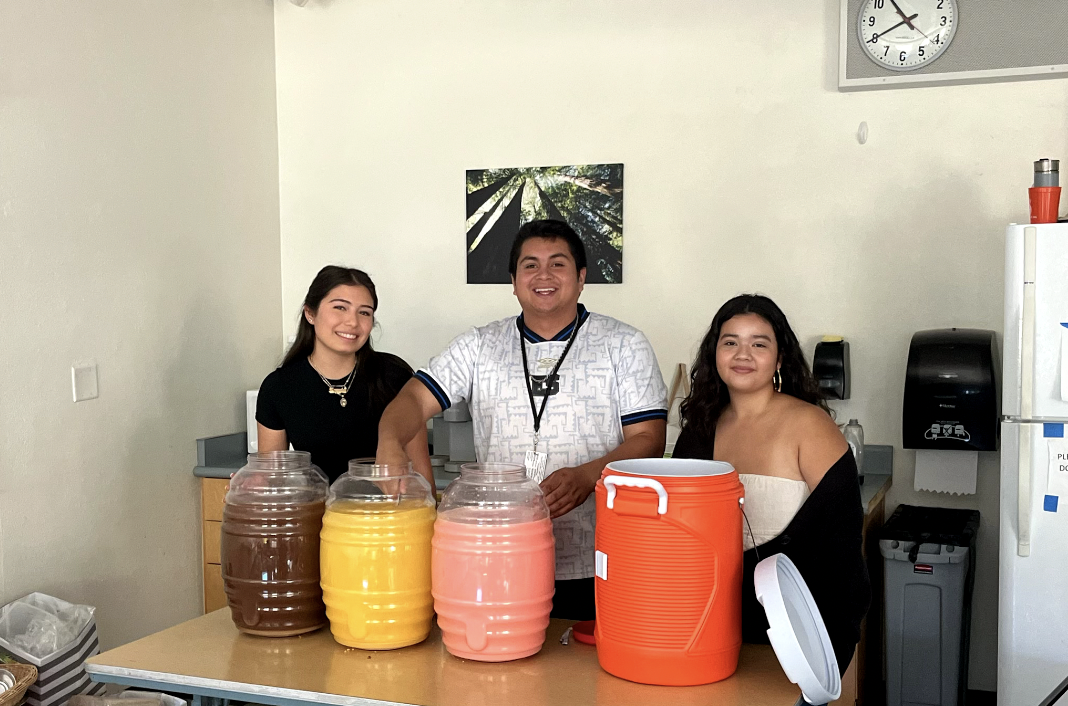Going Green: Science classes and clubs raise climate change awareness, along with local government and businesses
In the 1950s, Marin County environmental activists secured the preservation of the Marin Headlands, earning national acclaim for their efforts. Today, the county remains at the forefront of climate change policy, with 34 open space preserves encompassing 19,300 acres and 190 miles of unpaved public trails.
“The county of Marin has developed a strong energy use plan that has policies in there for conservation practices and not only in reducing growth and development, but also on how the energy is used,” said Jon Elam, President of the Marin Conservation League and California delegate for the past four United Nations Framework Conventions on climate change. “So I think counties all around Marin look to us for guidance.”
In 2006, the Marin County government established the Greenhouse Gas Reduction Plan, which set targets to reduce greenhouse gas emissions in the unincorporated areas of Marin County by at least 15 percent below 1990 levels by 2020. These goals were reached in 2012, according to a 2014 report released by the county government.
At Redwood, the Environmental Action club plans to institute a compost program and electric car charging stations to further their environmental initiatives.
Environmental Science and its AP counterpart, as well as Ecology and Sustainable Agriculture, are Redwood classes that also mainly focus on environmental awareness.
“In Sustainable Agriculture, the whole course is about reducing our carbon footprint through food,” said Joe Stewart, teacher of Sustainable Agriculture and AP Environmental Science. “Arguably, agriculture is the way we affect our environment the most. By producing our food locally, we are reducing carbon emissions found through [decreased] transportation.”
In addition to these classes, school clubs and activities throughout the year spread environmental awareness to the student body.
“A lot of what the Environmental Action Club does is raise awareness for reducing carbon footprint by orchestrating ‘bike to school days’ throughout the year and administering an ‘energy audit’ of the school,” Stewart said.

The Environmental Action Club also plans to improve the school’s recycling efforts by implementing a compost program with Stewart’s Sustainable Agriculture class in the spring.
“We are trying to bring compost and recycling bins to Redwood in the spring semester. We just got a grant, so now we just have to purchase them,” said junior Isaac Perper, co-president of the Environmental Action Club. “After that, we are going to educate people on which waste goes where.”
Each May, the Environmental Action Club organizes the Sustainability Festival, which raises awareness on how individual activities, such as transportation, affect the environment.
To promote more green transportation, the Environmental Action Club hopes to bring electric car charging stations to the Redwood parking lot, Perper said.
“We are trying to get electric car charging stations to try and reduce our carbon footprint. In order to get our charging stations, we are going to have to propose a plan to the Tam District board,” Perper said. “We are also going to send out a survey in the next coming weeks that will gauge how many people at Redwood carpool and own electric cars.”
Beyond Redwood
Outside of Redwood, the Marin County government has created sweeping, successful environmental programs, Elam said.
Since the county met the targets of the Greenhouse Reduction Plan, county officials proposed a new goal to reduce emissions levels to 30 percent of 1990 levels by 2020.
According to the county government study, implementing these standards along with other state standards, would be equivalent to removing more than 20,000 passenger vehicles from the road each year, reducing gasoline consumption by more than 11 million gallons per year, or providing renewable energy to power more than 9,000 homes each year.
Along with the county government, a public agency called the Marin Clean Energy (MCE) program offers energy efficient initiatives for local residents and business owners in partnership with PG&E, Marin County’s energy supplier.
The MCE website offers three packages: PG & E’s 22 percent renewable energy, MCE’s 51 percent renewable energy and MCE’s 100 percent renewable energy. Renewable energy includes solar, wind, and hydroelectric power.
This MCE initiative seems to be quite effective, since 80 percent of the electricity used in Marin County is supplied through MCE, according to MCE statistics.
Evidence of Marin’s success with environmental programs can be found in its current policies and in its history, Elam said.
“The foundation of Marin County clearly is the decision by the leaders in the early 1970s to really start to try and preserve the empty open space in the county,” Elam said. “There is no larger success other than the development of the Golden Gate National Park and the sister parks of Tennessee Valley, Muir Beach, and so on. These deals set a great precedent for how we should develop environmental policies.”
A Clean Compromise: Local air quality affected by China’s pollution
In a momentous climate change deal, President Barack Obama and President Xi Jinping of China agreed to each reduce their greenhouse gas emissions during the next two decades.
The United States will cut emissions by at least 26 percent from 2005 levels by 2025, according to the President, and China will aim to get 20 percent of its energy from zero-carbon emission sources by its peak emissions year of 2030, according to Jinping.
This deal will help clean Bay Area air because China’s carbon emissions circulate the globe every seven days, according to Jon Elam, president of the Marin Conservation League and California delegate for the past four United Nations Framework Conventions on Climate Change.
“If you were to do an in-depth evaluation of the air quality in the Bay Area or Los Angeles, you would find many particles that trace their roots to China,” Elam said.
Twenty-nine percent of the pollution in the San Francisco Bay Area comes from China, according to a 2010 study published in the Environmental Science and Technology journal. Carbon monoxide particles travel to the Bay Area through dust storms or air currents and can linger in the air for weeks at a time.
Power plants in China are mostly to blame for these harmful air particles, the EPA found. China’s power plants also contribute to its status as the top carbon dioxide emitter in the entire globe, according to the same EPA study. In 2013, 28 percent of global greenhouse gas emissions came from China.
Despite negative health effects, coal plants continue to be built. According to the IEA Clean Coal Centre, there are more than 2,300 coal-fired power stations worldwide. Approximately 620 of these power stations are in China, and hundreds more are in construction in China as of 2014.
Elam believes that this U.S.-China pollution agreement will improve local air quality because it will help curb coal plant construction and reduce China’s coal dependency.
“[China’s] growth is so fast and so huge. Their emission levels are growing at an astronomical level compared to the U.S. The solution is to reduce China’s dependence on coal for the power plants by developing renewables,” Elam said.
It may be easy to set goals, but implementing them will be more challenging, Elam said.
“Carrying out these agreements is not so easy because China does not have the natural resources and the fossil fuels for natural gas that the U.S. has,” he said. “So you’ve got to give them some lead time and incentive to plan and evolve, as this agreement does.”
Critics of the climate deal believe that will hinder America’s economy by cutting coal jobs.
Elam believes that although some jobs may be lost, the agreement is still worthwhile because it it will improve the world’s air, water, and soil. Furthermore, he added new jobs in alternative energy can replace jobs lost in the coal industry.






